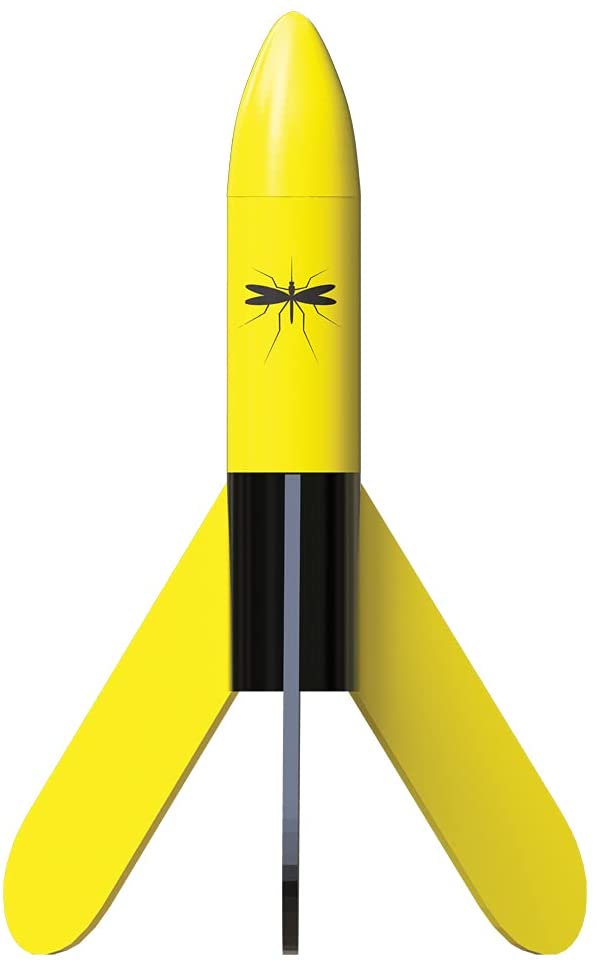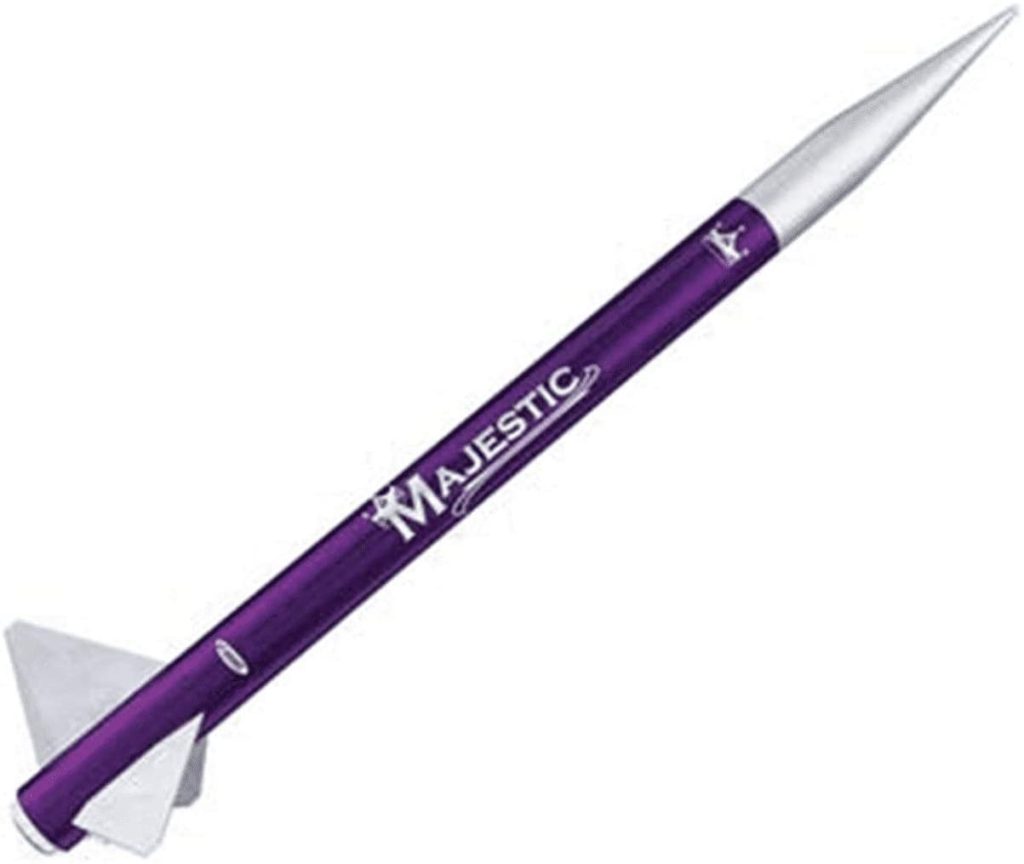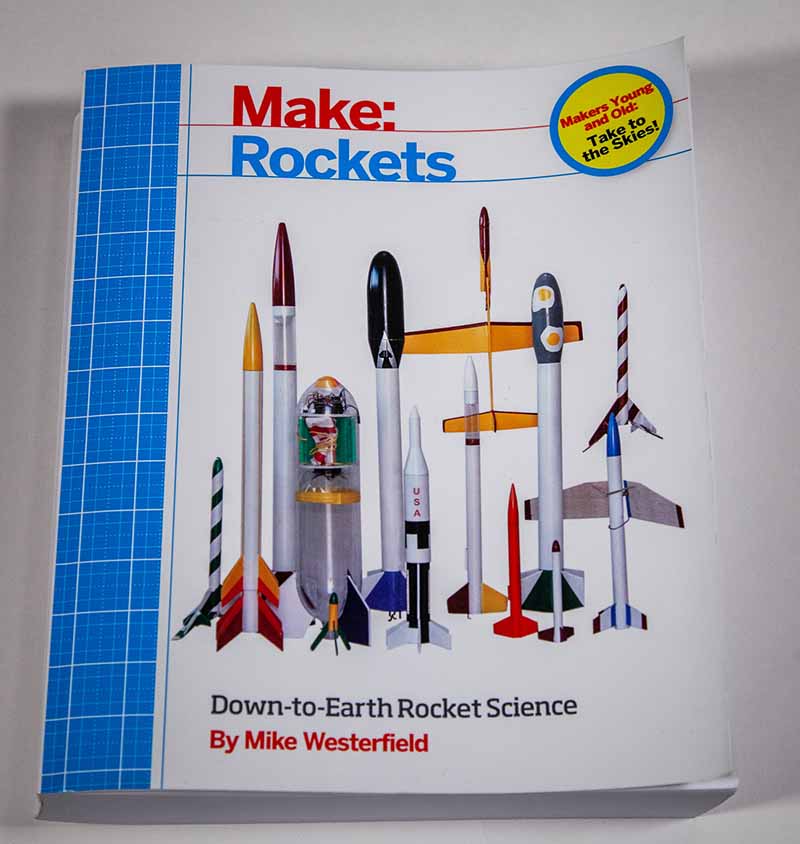
I’m sitting at the kitchen table building rockets with my two little boys, and my oldest asks how high his rocket is going to go (and more importantly, will it go higher than his little brother’s). I try to give my kids honest answers, and truth be told, I was curious about the answer too. So of course, this took me on my next deep dive.
A typical low-powered model rocket you can buy off the shelf in a hobby or craft store can fly between 100 and 2,500 feet. Mid and high power rocketry can fly much higher but requires certification to purchase engines and FAA clearance to launch.
It is possible for an amateur rocket to fly much higher, though. In fact, this group of college students were able to launch the first entirely student-built rocket 340,000 ft. At that height, they are technically in space!
Before we go on and explore how high a rocket can go, I’m going to limit our parameters to low-powered rocketry and commercially available rockets. As you can see in the video above, if you want to nerd out and get into custom high-powered rocketry, you can go pretty dang high. If we were to broaden our scope and include NASA, the sky’s no longer the limit (“space is the limit” just doesn’t roll off the tongue right). Let’s keep this within the reach of what is achievable by me and my 8-year-old.
Factors That Affect How High Your Rocket Can Fly
There are three main factors that determine the ultimate altitude of your flight: drag, weight (I know all you science-y people out there are shouting at the screen. Yes, technically it’s the force of gravity acting on the mass of the rocket. But for us normal folk, weight is an acceptable term), and thrust of the motor. When you look into each factor and consider the possible combinations of all three, you can get high-flying rockets that look very different.
The Effects of Drag on a Rocket
Okay, let’s get technical for a second and talk about drag. The drag on the rocket is proportional to the area it presents in the direction of travel. It’s not just about surface area, but about the surface area that is in contact with air as the rocket travels (phew).
Therefore, if we want to fly a rocket as high as possible, we’re going to want as little drag as possible. One way we can do this is by flying a minimum diameter rocket, that is, the smallest possible body tube that can still fit your chosen engine.
Another way to reduce drag is to take those balsa fins and sand them so that the profile of the fin has a slight teardrop shape with the narrowest part at the top of the fin. This will make the fins more aerodynamic and therefore have less drag.

If you want to take things to the next level, you’re going to want to create a high-polish paint job. This may sound trivial, but simulations between a regular matte finish versus a polished finish show a 14% difference in altitude. That’s a pretty big deal. (If you want to learn more about how to make your rockets fly higher, check out How to Make My Rockets Fly Higher.)
Rocket Engine Size and Higher Altitude
Obviously, the more power the engine has, the higher it can go. The downside to this is that a bigger motor will also have a larger diameter increasing drag significantly, even on a minimum-diameter rocket. A bigger engine also means much more weight.
You can also create more thrust by adding a booster engine and turn your single-stage rocket into a two-stage rocket. This gives you the added benefit of essentially doubling your engine’s Total Impulse (more on rocket engines here) without increasing the diameter of the rocket.
Three High Flying Estes Rockets You Can Build and Launch
When you consider the factors that are affected by adding a larger engine, you quickly realize that making a high-flying rocket is a balancing act. But if you play your cards right, you can find rockets that are designed to reduce drag as much as possible while still adding as much power as possible.
The variations can look quite different. Let’s look at three different Estes rockets that balance drag, weight, and thrust inthree different ways and still manage to fly pretty dang high!
Estes Mini Mosquito
One extreme design for a high-altitude rocket is to use the highest power but smallest diameter rocket engine (an Estes A10-3T. More on rocket engines here). Let’s now pair that with the smallest rocket available, the Estes Mini Mosquito,which stands at a height of 3.8 inches.
Because the Mini Mosquito is a minimum-diameter rocket that’s incredibly short, it has about as little drag as you can get. Additionally, because the rocket is so small and uses the smallest diameter rocket engine, it’s incredibly lightweight to the point that it doesn’t even need a recovery system. The ejection charge pushes the motor out of the rocket and the rocket and spent engine gently tumble to the ground. The engine might be small, but in relation to the total weigh of the rocket with the engine, the amount of thrust used is surprisingly efficient.
Paired with an Estes A10-3T engine, with some additional aerodynamic finishes (more on this here), this little guy has the potential to fly up to 1000 feet! Be warned though, this little guy moves fast and it’s easy to lose it. Paint it bright color and keep your eyes open!
Estes Hi-Flier and Xtreme Rockets
As we move up in size from a tiny 13mm engine to a standard 19mm engine, the rocket is inevitably going to get bigger and heavier, but also more powerful, as it can fit a class C engine. Estes has two great rockets in this class that are designed to go high: The classic Hi-Flier and the newer Xtreme.
The Hi-Flier uses the classic building techniques of the older Estes rockets: laser-cut balsa fins and clay to pack into the nose cone to balance the rocket. The fins can be a bit fiddly to assemble, but you have the added benefit of being able to customize and shape them yourself. You can sand the fins and reshape them to a teardrop profile.
Another option is the Estes Xtreme, a cousin to the Hi-Flier. The main difference is that the Xtreme is a little longer (this is to add weight for better balance and gets rid of the clay needed in the Hi-Flier) and has a pointier nose cone tip. The other main difference is the Xtreme uses laser cut cardstock instead of balsa making the fins much thinner (and therefore have less drag).
With a C6-5 engine, both rockets should get you to around 1,600 feet (Estes has the Hi-Flier at 1,500 feet, but with a polished finish and sanded fins, the height will be more comparable to the Xtreme).
Estes Pro Series II E2X Majestic
On the opposite side of the spectrum is the Estes Pro Series II E2X Majestic. This guy is almost 3 feet long and uses the X-Large 29mm size engines. In fact, if you decide to fly this guy, you’re going to need a different launch pad and launch controller.
Estes brags that this guy can reach 2,000 ft on a single-stage engine. If you’re looking to go a little extra with this guy, you can buy a booster attachment (this does not come with the kit) and add a booster engine. This should take it to 3,000 feet!
This is a relatively easy build (no fiddly balsa wings. One of these days I’m just going to buy the stupid fin alignment guide and just stop complaining about the balsa fins.), but be warned; this rocket is not for the faint of heart! These are some powerful engines and you’re starting to dabble with mid-power rocketry. Once you go down this path, there is no coming back!
Diving Deeper into Model Rocketry
If you find yourself getting seriously into rocketry and you want to learn more, check out Make: Rockets by Mike Westerfield. Make is an awesome resource for so many things STEM-related and this book will give you everything you need to know about low-powered rocketry including compressed air and water rockets.
This book is no-joke and is about 1½ inches thick. This book has become my rocket bible and is a great resource (and no, Make did not ask me to say any of this).
Recent Posts
Flying rockets is super fun. My kids and I have a blast launching them into the sky and chasing them down. We love the idea of putting in a stronger engine each time and seeing how high we can...
Last week my son asked me how high a rocket can fly. As I went on my deep dive and explored just how high low-powered rockets can go, I started to ask myself another question. How can I make my own...





